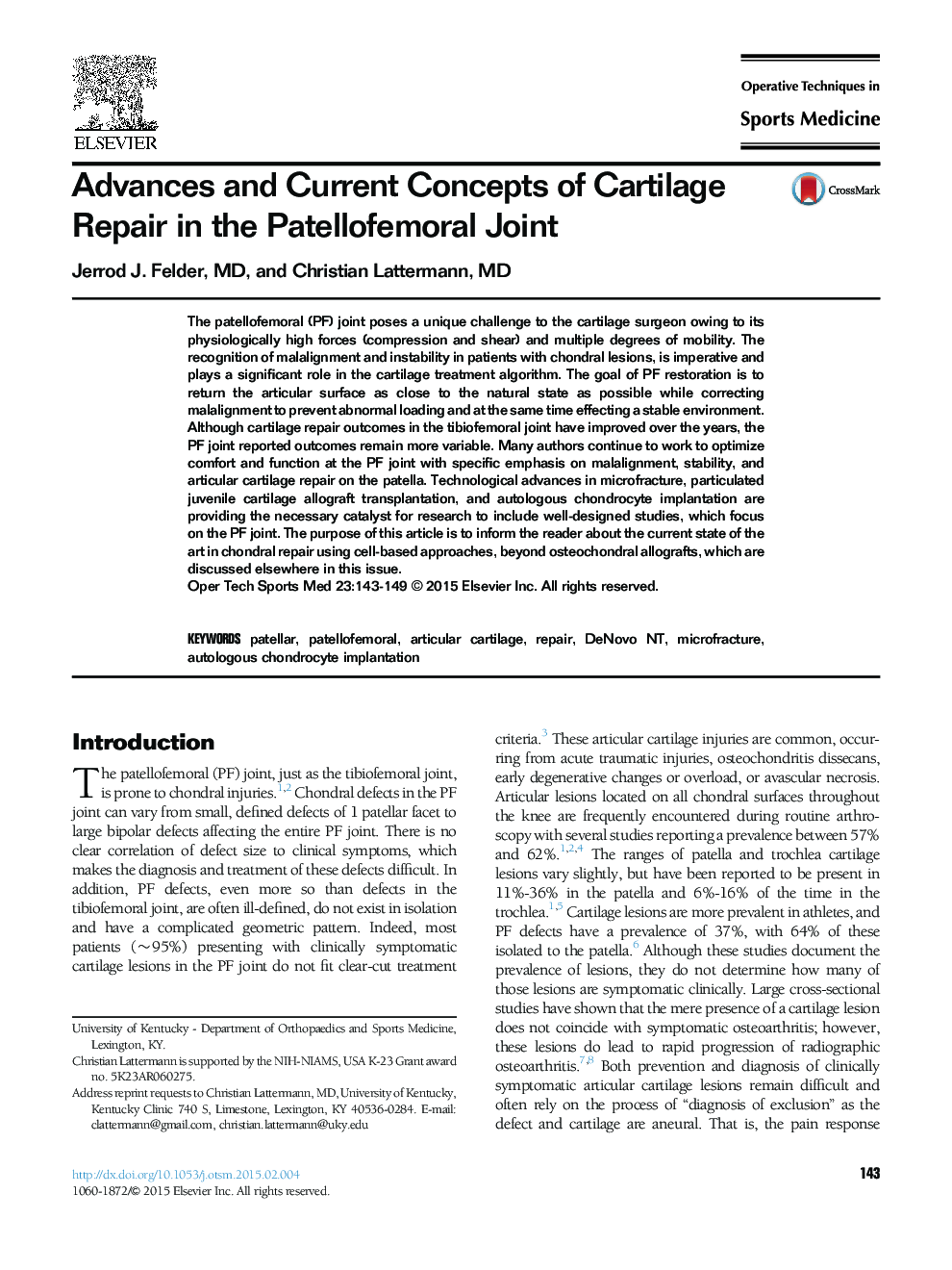| Article ID | Journal | Published Year | Pages | File Type |
|---|---|---|---|---|
| 4079484 | Operative Techniques in Sports Medicine | 2015 | 7 Pages |
The patellofemoral (PF) joint poses a unique challenge to the cartilage surgeon owing to its physiologically high forces (compression and shear) and multiple degrees of mobility. The recognition of malalignment and instability in patients with chondral lesions, is imperative and plays a significant role in the cartilage treatment algorithm. The goal of PF restoration is to return the articular surface as close to the natural state as possible while correcting malalignment to prevent abnormal loading and at the same time effecting a stable environment. Although cartilage repair outcomes in the tibiofemoral joint have improved over the years, the PF joint reported outcomes remain more variable. Many authors continue to work to optimize comfort and function at the PF joint with specific emphasis on malalignment, stability, and articular cartilage repair on the patella. Technological advances in microfracture, particulated juvenile cartilage allograft transplantation, and autologous chondrocyte implantation are providing the necessary catalyst for research to include well-designed studies, which focus on the PF joint. The purpose of this article is to inform the reader about the current state of the art in chondral repair using cell-based approaches, beyond osteochondral allografts, which are discussed elsewhere in this issue.
